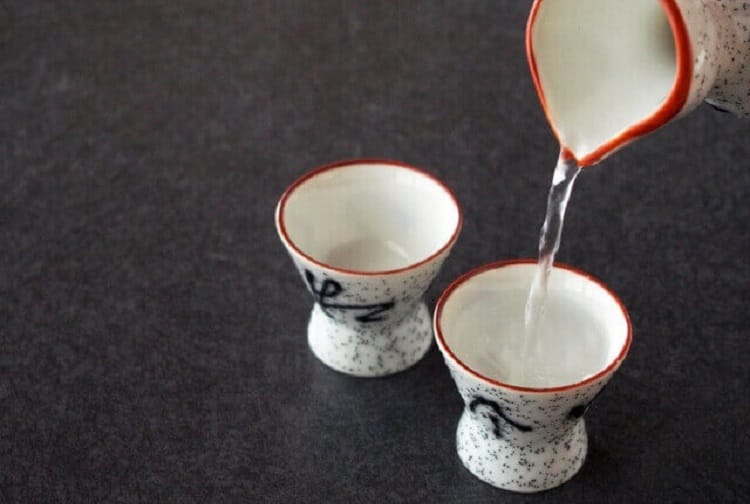
Differences by dragging
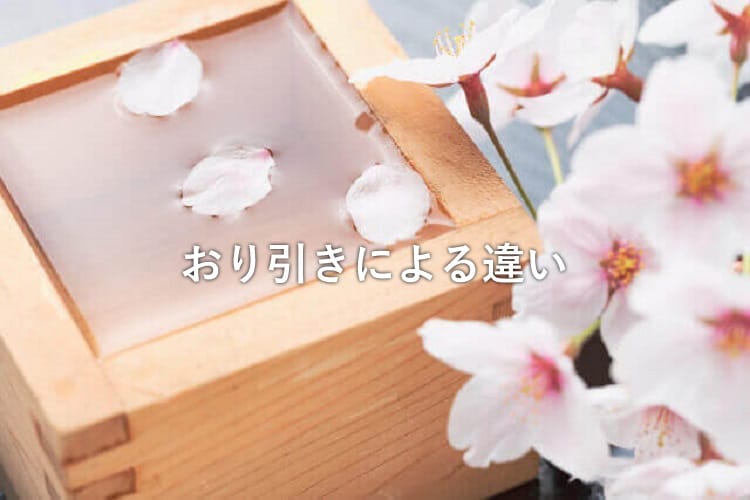
~ Taste that changes by mixing "ori" ~
・ Origami
The freshly squeezed raw sakeSmall pieces of rice grains, yeast, rice cake, etc. are floating in the liquid, and it is slightly cloudy and white.. These solids"Cori"called.
This cageThe work to remove is "origin drawing"is. In the storage tank, the part is allowed to settle slowly over about 10 days.
Most Japanese sake uses only the supernatant after extraction. But,Inside, there is a sake called `` Origami '' made by taking a little of the precipitated cage and mixing it with a transparent liquid..
The cage contains plenty of rice extract and is rich in amino acids and is packed with umami. Therefore, by adding a cage,It is darker than clear sake with regular dragging and finished with a taste that allows you to feel the rich umami of rice.It is
It still remains in the cageLiving yeast generates carbon dioxideNomo is a feature of Origami. It's fun to have a refreshing mouth with a fine foam that gives you a good feeling of gas.
“Origarami” is sometimes called “Sasagori”, “Usanigori” or “Kasumi Sake”.
~ Difference between “Origarami” and “Nigori Sake” ~
Speaking of sake that is also cloudy, many people will remember “Nigori Sake”.
Compared to `` Nigori Sake '' squeezed with a coarse cloth,“Origarami” has a small solid content and a small amount, so it has a light taste and is smooth and easy to drink..
Typically,The larger the solids left in the liquor, the more liquor the rice can taste.It is
Differences due to filtration
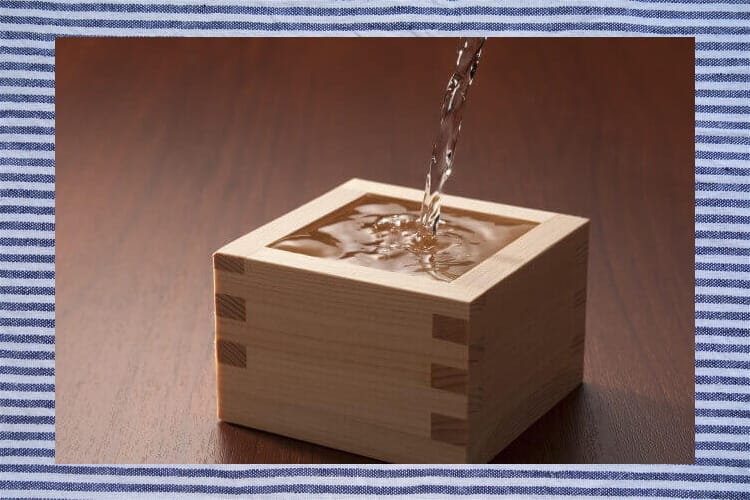
-Taste that changes depending on the presence or absence of filtration-
“Filtration” is a process that goes after “origin”.To remove solids and yeast that cannot be removed by simply precipitating in the tankIt will be done.
The taste changes greatly depending on whether or not this filtration is performed.
・ Features of "filtration" type
Sake filtered using activated charcoal, etc.The fine ingredients and flavor components that the sake originally has are also adjusted.. for that reason,Finished with a clear taste with no miscellaneous taste.
Also, because the color is lost,The feature of the filtered type is that it has a colorless and transparent appearance.is. If you want to have a refreshing and light drink, you should use a filtered one. Best match for light snacks.
By the way, nowadays, the amount of sake made by Ginjo has increased, and the miscellaneous taste of rice can be reduced from the milled rice stage.The amount of activated carbon used for filtration is lowThere seems to be a tendency.
・ "Non-filtering" type features
In recent years, many sakes that have not been filtered are appearing.. This is a popular genre called “no filtration”.
Unlike the filtration type, the taste may become unindividual,This type of popular secret is that the flavor inherent to the sake is alive.
You can feel plenty of umami and riceFinished with a dark punch with a good punchIt is. Sake, which has aroma components and colors, and has a bright yellow color, is visually appealing.
It will make you want to drink. If you want to enjoy a sense of volume, “Non-filtering” is recommended.
Difference by burning
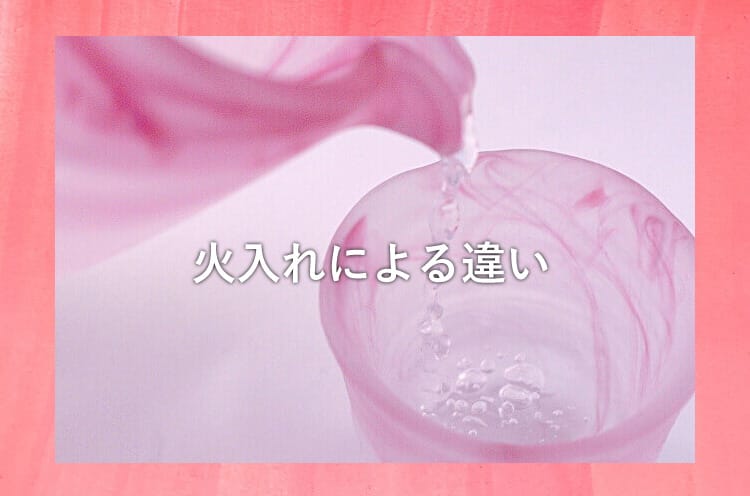
-Tastes that change depending on the presence or absence of fire-
“Fire-filling” means sterilizing sake at low temperature.Say. The temperature is about60 ~ 65About.
Stops the action of the enzyme and stops the growth of the kind of lactic acid bacteria that cause deteriorationThe aim is. There is a big difference in taste depending on whether or not this burning is done.
・ Namazake
"Sake" that does not fire at allCall it. While burning can prevent deterioration and alteration,This sake has gained popularity in recent years due to the aspect of losing flavor components..
The best attraction of fresh sake is thatFreshnessIt will be. You can enjoy the fresh feeling of playing. It is also sometimes called “Honsei” or “Namasei”.
Although it is a raw liquor that easily deteriorates, it has become easy to enjoy throughout the year because it is a modern brewing and distribution technology that has enabled temperature control.
Anyway, fresh sake is a life, so even after you buy it5 ℃ or lessYou must manage the refrigeration properly.
Once I forgot to refrigerate fresh sake and left it at room temperature for more than 6 months, the refreshing scent disappeared and the taste changed completely, and I was shocked.
Since sake is my favorite kind of liquor, I want to drink a lot in good condition, and I use a wine cellar with a bottle of sake. I enjoy drinking every night before going to bed.
When you open the sake, the taste will change over timeSo it's also interesting to compare the changes.
-Taste that changes depending on the number of times of burning-
The burning is usually1 times before storage, 1 times before bottling, total 2 timesWill be done. But,There is also a manufacturing method that only fires 1 times.
・ Raw storage liquor
Do not fire before storing, but fire 1 times when bottlingIs called "raw storage liquor".
Because the raw state of unburned will continue throughout the storage,You can enjoy a moderate freshness and a little aging.
・ Raw stuffed sake
Fired 1 times before storage and not fired when bottlingIs called “raw stuffed sake”.
Compared to raw sake and fresh sake,The fresh feeling is calm and there is a moderate aging feeling.
-Tastes that change depending on the "method" of burning-
・ Bottle holder
It is common practice to pour liquor into a pipe or plate called a snake tube, and warm the snake tube or plate.
However, what has been attracting attention as a method of burning in recent years is what is called "bottle burning" or "bottle burning".A method of lightly plugging a bottle filled with liquor and slowly warming the bottle with a hot water bath.
It takes time and effort compared to the general method of burning,Can confine the flavor components of sake in a bottleThere is an advantage.
Also, brewed sake, including sake, is vulnerable to sudden temperature changes,With “bottle-filling”, the drastic temperature change at the time of firing does not impair the original flavor of liquor.It is
It ’s not as much as raw sake,Finished with a type of liquor that tastes fresher than the ones that have been fired..
Differences due to storage
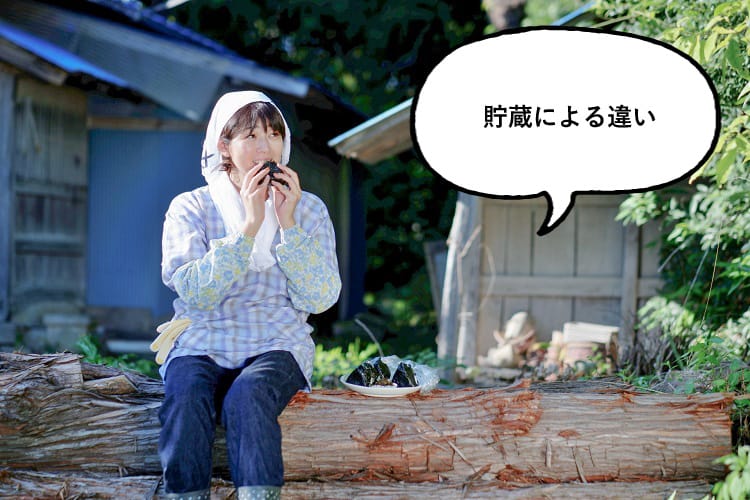
-Tastes that change with storage containers-
・ Barrel
Liquor stored and aged in wooden barrels. Many barrels are made of cedar wood, especially those using Nara's Yoshino cedar.
The charm of barrel wine is that the fragrance of the cedar tree has moved to liquor and you can enjoy a unique refreshing taste..
The items in the barrel at the time of shipment may be used for mirror opening at celebrations such as weddings. I also experienced a mirror opening at a sake event, but when I finally hit the lid with a tree, the fragrance of barrel wine rose up all over the place and I felt really good.
Aside from that,"Mirror" is a barrel lid. As with Kagami-an, it is called this because it is round and flat.
And since the “mirror” has long been thought of as an important soul dwelling, both the barrels of sake and Kagami-an express “open” the mirror, avoiding the word “break”. Or something.
・ Dove bottle enclosure
Liquor stored in a bottle containing 18 liters (= 1 bottle 10 bottles)is. It refers to sake that has been squeezed in a polite manner without the hassle and time of bag hanging.
The “Douboai” is the highest quality item, mainly those that are exhibited at the appraisal and limited Daiginjo sake.. Beautiful taste is exquisite. It is also called “Doy bottle removal”.
In general, storing in bottles compared to storing in tanksReduced risk of oxidation due to reduced contact with airThere is a merit that.
Difference due to water
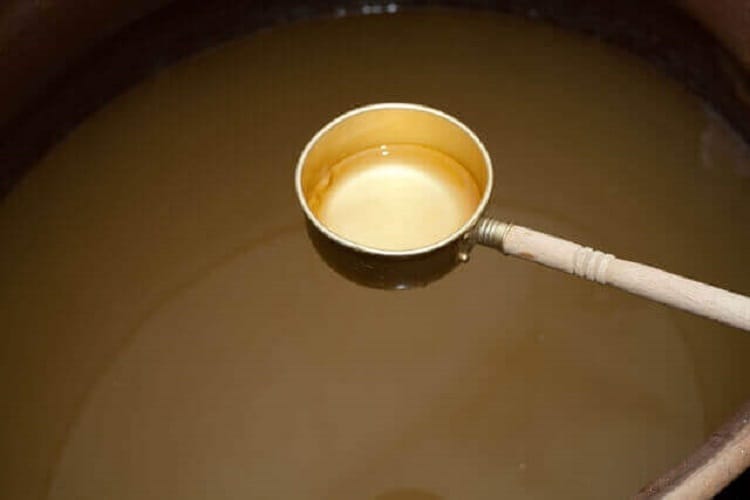
~ Taste that changes depending on the presence or absence of water ~
Sake is usuallyAdd water to the original sake to adjust the alcohol content and flavor according to the desired liquor qualityDo the work."Water split" (Warumizu)It is also called a process.
In many cases, feed water is used as the water to be added. Alcohol content of general sakeAbout 18 to 21%And quite high alcohol.
Most Japanese sake is hydrated with the original sake and has alcohol content15%It will be shipped as a product after diluting until about. thisThe taste changes depending on whether or not water is added..
・ Watered liquor
In general, it is said that the alcohol content is about 15% when you can drink it. for that reason,Hydrated liquor is easy to drink and finishes with a smooth and gentle taste..
・ Original sake
Raw sake basically does not add water. Therefore, in the original sake,There are plenty of scents and umami that are inherent to Japanese sake, and many are dark and strong.Is the feature.
Because of the high alcohol content, some people may feel that the attack is too strong, but some people have a habit of drinking. It is a sake that you can experience a firm taste with a punch.
Differences due to shipment
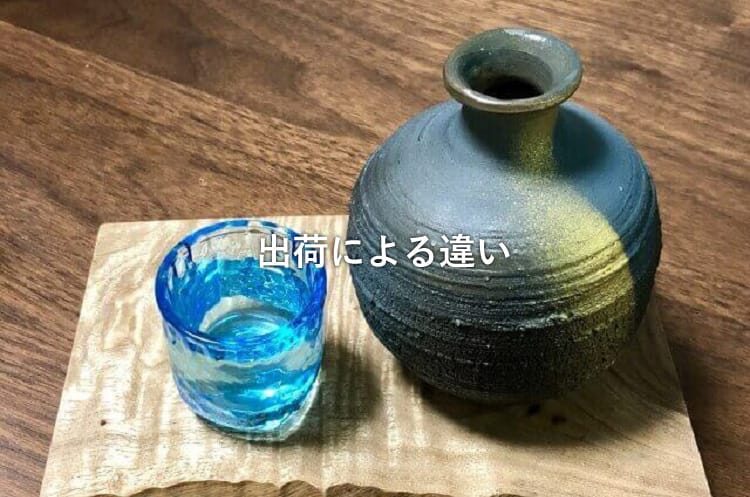
-Taste that changes with the season of shipment-
・ Sake
“Sake” or “freshly squeezed” for those that are shipped immediately without a storage periodCall it. However, the word “new sake”There is no clear definition, and it is left to the interpretation of each brewery.
In general,12-3 is a fresh tank shipped around the monthI feel that I often call it “new sake”. Because of its short storage period, the appeal of “Shinshu” is that you can enjoy the fresh, freshly squeezed youthfulness.
・ "New Year's Day Squeeze", "New Year's Day Squeeze"
There are also some special drinks that will be shipped during this new sake season. that name as well"New Year's Day Squeezing" and "New Year's Day Squeezing".
As you read,“New Year's Day squeezing” is liquor that is squeezed on the morning of New Year's Day on 1 month 1 day, and “New Year's Day squeezing” is liquor that is squeezed in the morning of early spring of 2 month (New Year's New Year)Say. It's a celebratory liquor that's suitable for a happy day.
In both cases, the squeeze date is clearly determined, so it's no use if it's too early, and it's also a matter of course.
for that reason,You must pay close attention to the progress of the fermentation of moromi, and it will require perfect management and adjustment.. It is a place where Mr. Tsuji's arm is shown, but it seems to be a sake that makes Mr. Tsuji cry.
And since the squeezed liquor must be bottled and shipped immediately, the brewery is desperate. Sometimes it will be all night.
A nearby liquor store may go to the brewery early in the morning to help with bottling and shipping.
It's a freshly made liquor in the morning, so the taste is fresh. BestFresh and fruity fragrance and a sense of vibrancyCan enjoy. I would like to thank Mr. Tsuji for his outstanding skills.
・ Summer sake
The category “Summer Sake” may not be familiar to many people. That should be it,Birth is relatively new, a new genre that is said to have started around 2007.
One of the reasons why “Summer Sake” was born wasA sharp drop in consumption of sake that occurs every summerwas. The image of sake being drunk in the cold season has become established, and in the hot season, the tendency to prefer beer was overwhelmingly strong.
It was born in order to overcome such a situation and to make people know that sake can be enjoyed deliciously even in summer.
Even if you say “summer sake”Actually, there is no clear definition of “summer sake”, and each brewery has squeezed wisdom to make various types of drinks that can be enjoyed in the summer..
There are a wide variety of drinks, ranging from refreshing sourness to fresh sake with a youthful taste, and dark-flavored sake with a delicious on-the-rock. It's fun to choose the type that suits your taste and mood from those variations.
My favorite drink every summer is Kinoshita Shuzo (Kyotango City, Kyoto), “Tamagawa Ice Breaker Junmai Ginjo Unfiltered Raw Sake”. A cool blue label with penguin illustrations.
Pour into a large glass with plenty of ice and drink. It is an essential summer item for me that makes me feel like “Summer has come”.
・ Hiya-Goshi
“Hiya-oroshi” is made in winter, squeezed in early spring, stored and matured during the summer, and shipped in the fallis. When autumn arrives, you often see a banner stating “Hiya-oroshi” standing in front of the izakaya."After autumn" "Sunny autumn"It is also called.
The so-called fire is only 1 times before storage."Raw stuffed sake".By aging for about half a year, while maintaining a fresh feeling, you can enjoy a mellow, deep and balanced taste.
The origin of the name “Hiya-Goshi” is said to be “Girls = Shipping” with “Hiya = Raw” not fired for the 2th time.
It is a technique that has been around since the Edo period.Okanaga Co., Ltd., a wholesaler in 1975Triggered by the sale of limited sake in autumnOr something.
Autumn is the season when the ingredients become more delicious and the table becomes richer. “Hiyaoroshi” where you can spend a summer in a brewery and deepen the taste. With these gastronomic dishes, you will be able to play a harmony that won't be profitable.
